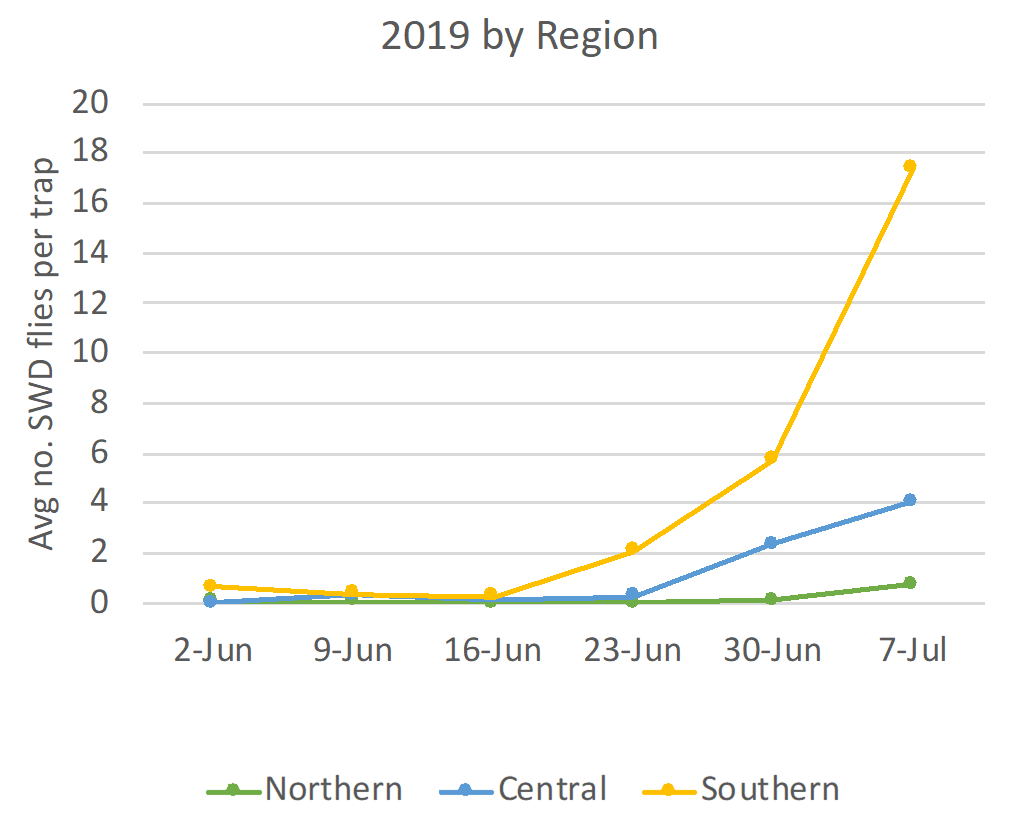Michigan spotted wing Drosophila update – July 16, 2019
Spotted wing Drosophila populations are surging in southwest Michigan; protect susceptible crops.

As predicted in our last report, the warmer weather has triggered the spotted wing Drosophila (SWD) population surge, particularly in southern Michigan (see graph). Over the past week, the number of SWD flies caught in Michigan State University Extension monitoring network traps increased substantially in Allegan, Berrien, Van Buren and Ottawa counties where blueberry harvest has begun. An uptick was also recorded in Kent, Macomb and Ingham counties. Overall, 60% of the 70-plus sites being monitored caught SWD flies in traps last week, which is a two-fold increase over last week.
Given how quickly this pest can reproduce and how devastating it can be, if your crop is at a susceptible stage, a cover spray of an insecticide that is rated excellent against this pest would be warranted to prevent infestation. Remember to rotate insecticide classes once you begin your spray program. Growers can determine how well their program is working by trapping for flies and sampling fruit using the salt test in the days prior to harvest.

Crops that will become susceptible as they ripen include strawberries, caneberries, sweet and tart cherries, blueberries and most other thin-skinned fruits including wild berries often found in woodland edges (e.g. honeysuckle, black caps, mulberries, and dewberries). SWD is being monitored in 17 counties where the majority of these fruits are grown including.
Check out the most recent versions of SWD management guides offered by MSU Extension.
Refresh your ability to identify SWD with MSU Extension’s Spotted Wing Drosophila Identification Guide.
For more information on effective insecticides registered for use to control SWD, refer to MSU Extension’s Michigan Fruit Management Guide for 2019 (E-154).



 Print
Print Email
Email
